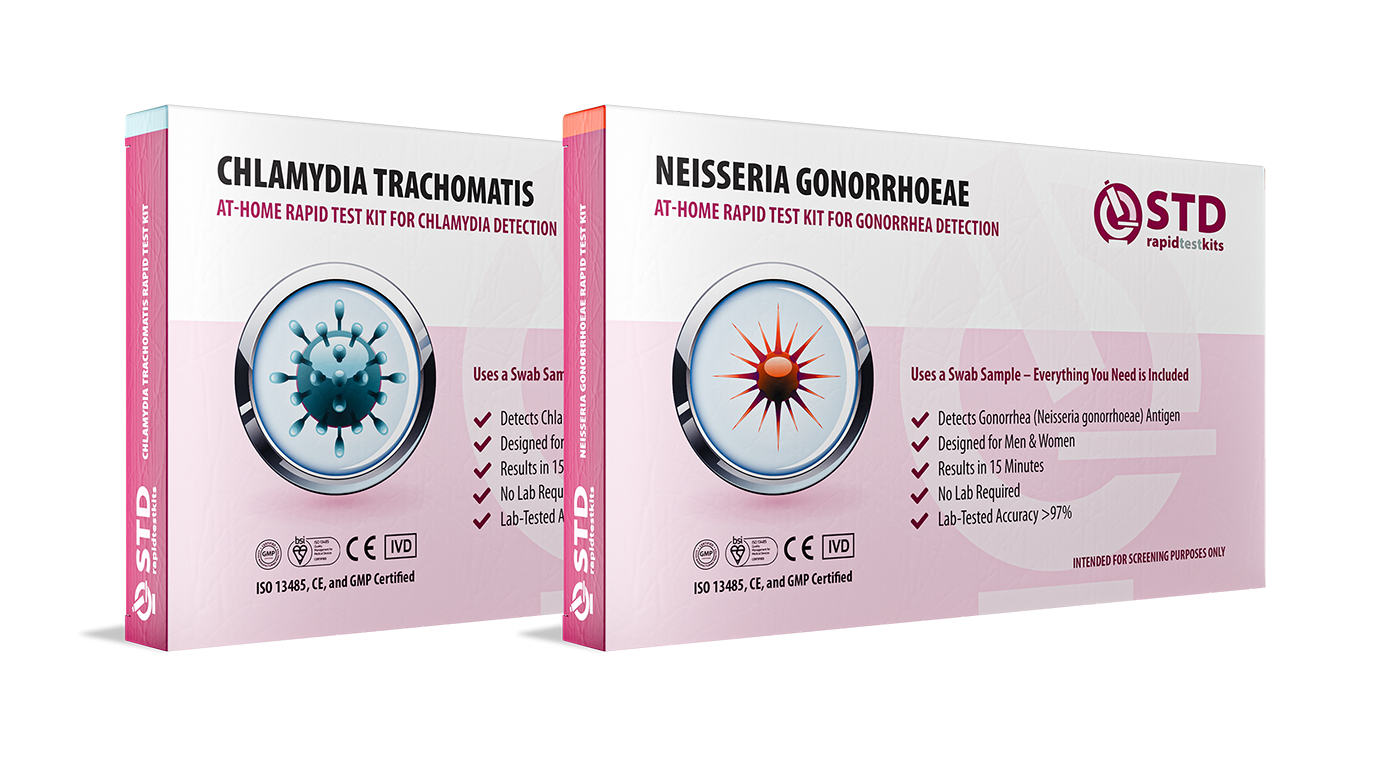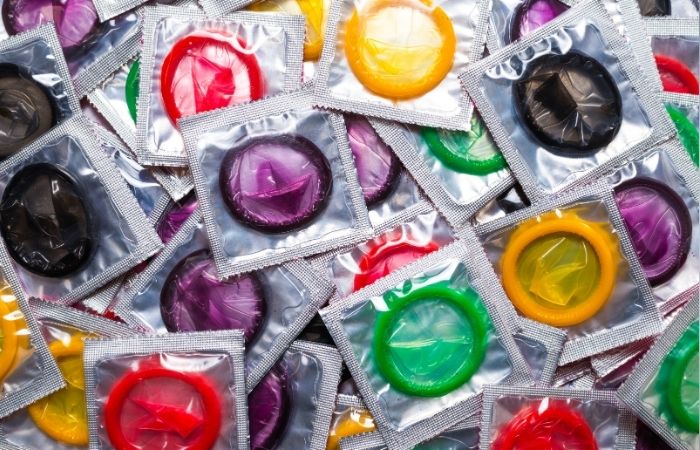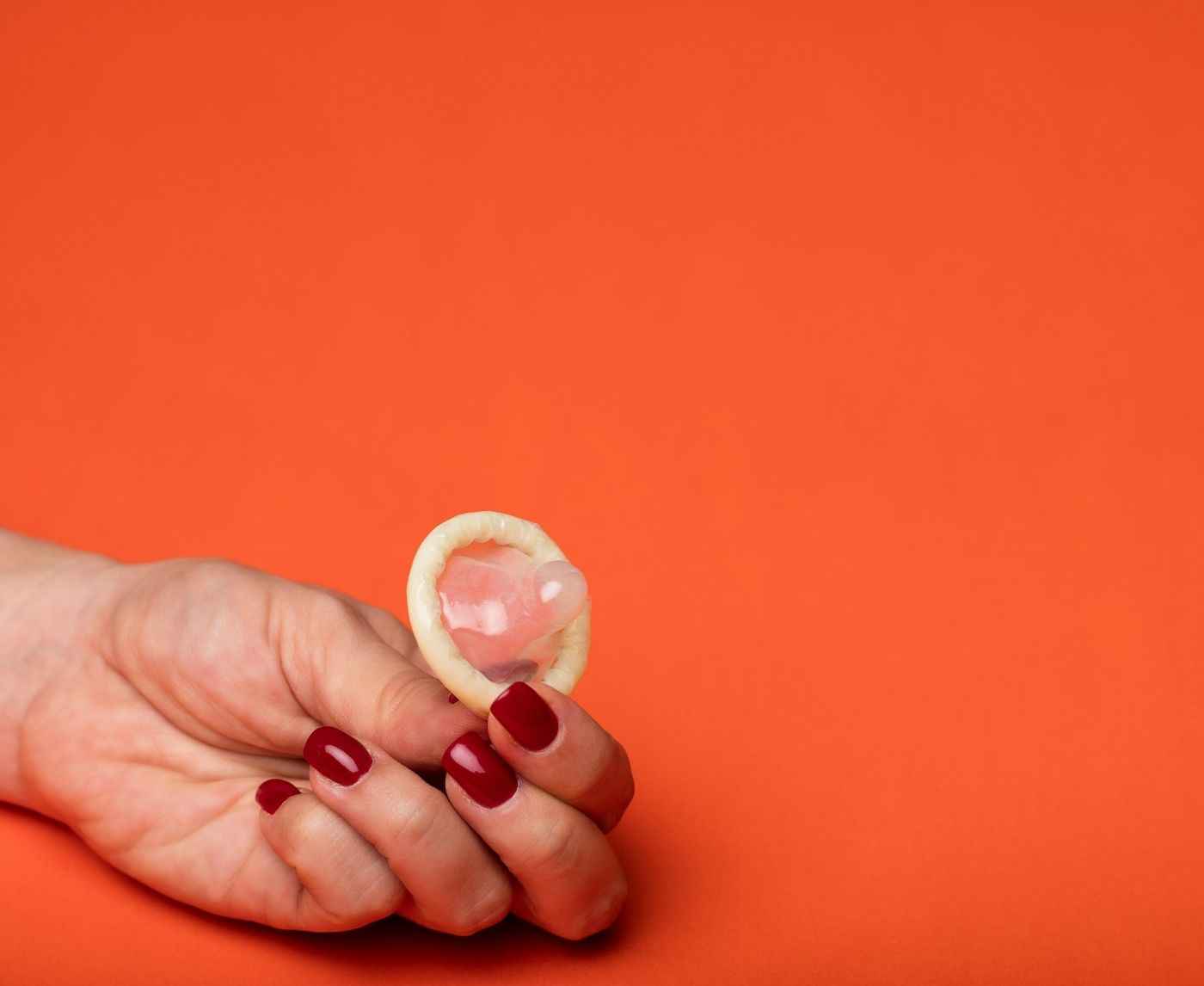Quick Answer: STD transmission is still possible even when using condoms correctly. Some infections spread through skin-to-skin contact, oral sex, or imperfect usage, risks that increase with travel hookups.
This Isn’t Just Jet Lag, When Symptoms Sneak In After the Trip
For a lot of people, the symptoms don’t hit until you’ve already unpacked. Maybe it’s a strange itch. A bump. A sore throat you didn’t have before. Or maybe, like Dani, it’s that signature burn during urination that makes your stomach drop. Chlamydia and gonorrhea often present with that specific discomfort, but not always. In fact, according to the CDC, up to 70% of people with chlamydia won’t show symptoms at all, until complications begin.
So what are people Googling the week after vacation?
“Itchy after vacation sex.”
“STD symptoms days after sex.”
“Used a condom but still got chlamydia?”
Those search terms aren’t rare. They’re common. Because while you might’ve used protection, your partner might’ve had something they didn’t know about, and not all STDs are blocked by a latex barrier. Herpes, HPV, and syphilis can all spread through skin-to-skin contact, including areas the condom doesn’t cover.
“We Used Protection” Doesn’t Mean “No Risk”
In theory, condoms are 98% effective at preventing STI transmission when used perfectly. But let’s be honest: travel sex rarely happens in perfect conditions. You’re tipsy. You’re in a new country. The condom goes on a little late. Or maybe it slips. Or breaks. Or the oral sex before penetration wasn’t protected at all.
Studies published in the Journal of Sexually Transmitted Diseases show that real-world condom effectiveness is closer to 70-85% depending on the STD and the quality of use. Herpes, for instance, can spread from skin that isn’t covered by a condom at all. HPV often infects areas around the genitals, and while most strains clear up on their own, some lead to genital warts or cervical cancer. Even HIV, while far less likely with condom use, still carries a small transmission risk, especially if the condom is not used correctly or if there are other STIs present that create small tears in mucosal tissue.
So yeah, you “used protection.” But protection isn’t the same as immunity. And travel adds layers of complexity, new partners, unfamiliar norms, and a pressure to go with the flow. Combine that with the fact that many STDs don’t show up right away, and you get a perfect storm of confusion, guilt, and Googling.
Micro Moments That Matter More Than You Think
Let’s rewind to the scene most people don’t talk about: You’re at a beach bar. The vibe is good. You're both sweaty and sunburnt, laughing over plastic cups of cheap sangria. He’s hot. You’re down. You hook up in the hostel shower, and yes, you use a condom. But did you use it during oral? Was it on before his body touched yours? Did you check for tears after?
STI transmission isn’t always about full penetration. Herpes type 1, the same virus that causes cold sores, can infect the genitals via oral sex. That’s one reason people end up testing positive for genital herpes even when they’ve technically never had “real sex.” As one Planned Parenthood guide puts it, “The virus can spread even when no symptoms are present, and even if the infected area isn’t touched directly.”
Now imagine how many travel hookups include quick oral, dry humping, and rushed protection. It's not about carelessness, it's about real-life sex being messy, imperfect, and human. Especially when you’re far from home.

People are also reading: The Growing Demand for Private STD Testing
“I Thought I Was Safe”, The Shame Spiral After Travel Hookups
When you get tested after a trip and the results come back positive, the emotional crash hits hard. For Jamal, 27, the diagnosis came after a weekend in Tulum. “It was supposed to be fun,” he said. “We used protection, I thought I was doing everything right. But two weeks later, I tested positive for gonorrhea. I felt stupid. Dirty. Like I failed some invisible test.”
This shame spiral is one of the biggest reasons people delay testing, or never test at all. The truth is, STDs aren’t proof of recklessness. They’re a reality of human intimacy. Especially when you’re traveling, where routines are loose, communication is rushed, and assumptions happen fast. According to a 2020 global sexual health study, international travelers are significantly more likely to engage in casual sex and less likely to use protection consistently, particularly during oral sex. Even people who carry condoms often forget that oral and skin-to-skin contact are common transmission paths too.
That’s why so many people feel blindsided. They didn’t “forget” to be safe, they just didn’t know what full protection actually looks like. The stigma around STDs makes it worse. Instead of asking questions or getting tested, people stay silent, hoping the symptoms disappear. But they often don’t.
What Condoms Actually Protect Against, and What They Don’t
This is where the myth-busting matters. Condoms are fantastic at reducing risk for HIV, chlamydia, and gonorrhea, all infections that are transmitted through bodily fluids. But even in these cases, protection depends on when the condom goes on, how it's stored, and whether it's used throughout the entire encounter.
But condoms don’t protect against everything. Infections like herpes, HPV, and syphilis can spread through direct contact with skin or mucous membranes, not just semen or vaginal fluids. If the infected area isn’t covered by the condom, transmission can still happen. That’s why people sometimes test positive even when they never “went all the way.”
And oral sex? It’s rarely protected at all. A review of STI transmission risk through oral sex showed that herpes, syphilis, gonorrhea, and even chlamydia can all pass between mouths and genitals. Yet most people don’t think to use condoms or dental dams during oral. Especially not during travel. Especially not during heat-of-the-moment hookups.
“I thought the condom was enough,” said Casey, 23, who tested positive for herpes after a study-abroad fling. “It didn’t even cross my mind that we weren’t protected during oral. I feel dumb now, but no one teaches you that.”
Check Your STD Status in Minutes
Test at Home with RemediumChlamydia & Gonorrhea Test

 For Men & Women
For Men & Women Results in Minutes
Results in Minutes No Lab Needed
No Lab Needed Private & Discreet
Private & DiscreetOrder Now $49.00 $98.00
For all 2 tests
What the Research Says About Travel and STD Risk
The connection between international travel and STD risk isn’t just anecdotal, it’s been studied, tracked, and published for over a decade. The World Health Organization has reported that mobile populations, especially young tourists, face elevated risk due to a mix of high partner turnover, lower condom use, and cultural unfamiliarity. One study from the Journal of Travel Medicine found that among people who reported casual sex while traveling, nearly 50% did not use a condom during oral or initial genital contact.
Other researchers have coined a term for this behavioral shift: “vacation state of mind.” You’re more relaxed, more impulsive, and less risk-averse. You’re also more likely to hook up with someone whose STD status is unknown, and whose language or cultural norms might not match your own. All of this makes it easier for infections to pass between people without anyone realizing it until later.
Some of the highest post-travel STD testing spikes occur about 10–21 days after return, which aligns with the incubation period for common infections like chlamydia, gonorrhea, and syphilis. By the time symptoms appear, or don’t, many people don’t even associate them with their trip. That’s where home test kits can play a critical role.
If you're experiencing anything unusual, even a minor itch or discharge, it’s worth testing. You don’t have to wait for it to “get bad.” Many STDs are treatable, and early detection prevents long-term damage like pelvic inflammatory disease, infertility, or increased HIV risk.
Don’t Wait, Test From Home (Yes, Even for Travel Hookups)
Whether you’re back from vacation or still on the road, you can check your status privately and quickly. This at-home combo test kit lets you screen for the most common STDs, without waiting rooms, judgment, or delay. All you need is a few drops of blood or a urine sample, depending on the infection. It’s fast, discreet, and delivers peace of mind.
You don’t have to tell anyone. You don’t have to panic. You just have to act. Because silence doesn’t stop transmission, testing does.
Let’s Talk Prevention Without Shame
If you're reading this after a hookup, a trip, or a surprise diagnosis, let’s get one thing straight: you didn’t fail. You didn’t mess up just because you caught something. STDs aren’t punishments, they’re a part of sexually active life, and the real “mistake” is not talking about them. That said, there are ways to be more prepared next time, especially if travel is part of your lifestyle or work.
First, pack like sex is possible. That means bringing more than just condoms. Latex or polyurethane condoms are a great baseline, but so are dental dams for oral sex, water-based lube to reduce friction (and tearing), and maybe even a couple of extra clean underwear in case you want to freshen up post-hookup. Keep your safer sex supplies where you can actually access them, not buried in checked baggage under your hiking boots.
Second, rethink what “safe sex” means. It’s not just about condoms and STI status, it’s about communication, timing, and attention. Did they put the condom on before contact? Was there oral sex without protection? Did you notice any unusual bumps, sores, or smells but brushed them off in the moment? Your gut isn’t always paranoia. Sometimes it’s prevention whispering at you through the noise of attraction and adrenaline.
And third, normalize testing like it’s brushing your teeth. No one expects to avoid cavities by brushing once a year. Same logic. If you’re having sex, especially with new or travel partners, routine testing is part of responsible pleasure. If something feels off, test early, not eventually.

People are also reading: Can Chlamydia or Gonorrhea Make You Infertile?
Real Sex Is Messy, So Let’s Get Real About Testing
For so many people, the delay in testing isn’t about logistics, it’s about fear. “What if it’s positive?” “What will they think?” “What if I have to tell someone?” But here’s the flip: knowing your status is a form of power. It’s how you protect the people you care about. It’s how you stop the internal monologue that keeps spiraling at 2AM. And it’s how you avoid becoming the person who unknowingly passes something on, thinking they’re clean.
STDs are incredibly common. One in five Americans has one right now, many without symptoms. You are not dirty. You are not alone. And you are not broken because your body did what bodies do, responded to connection, pleasure, risk.
Guilt is not a strategy. Clarity is. That’s why at-home tests are a game changer. They’re confidential, easy to use, and surprisingly fast. You don’t need a doctor’s permission to care about your health. You just need the willingness to check.
And if you test positive? Take a breath. Many STDs are treatable with a single round of antibiotics. Others, like herpes or HPV, are manageable with meds and monitoring. You are still worthy of pleasure. You are still allowed to have sex, relationships, intimacy, love. Your diagnosis is data, not a life sentence.
Check Your STD Status in Minutes
Test at Home with Remedium6-in-1 STD Test Kit

 For Men & Women
For Men & Women Results in Minutes
Results in Minutes No Lab Needed
No Lab Needed Private & Discreet
Private & DiscreetOrder Now $119.00 $294.00
For all 6 tests
Case Study: “We Were Careful. I Still Got Something.”
Monique, 32, met her vacation hookup on a boat tour in Santorini. “We clicked fast,” she said. “We were both single, both respectful. We used condoms for everything, except the oral. He said he was clean. I believed him.” Two weeks later, she developed sores on her inner thigh. Herpes. “I felt stupid at first, like I’d ruined my life. But my doctor explained it’s actually super common, and honestly? The diagnosis didn’t change my life. The shame did.”
Monique’s story is one of many. Herpes, in particular, affects about 1 in 6 people in the U.S., and many never show symptoms. Some catch it from oral partners who don’t even know they carry the virus. That’s why testing by status alone isn’t enough, because a lot of people think they’re “clean” when they’ve never actually been tested for everything. Most standard panels don’t even include herpes unless you ask.
“I wish I’d known that,” Monique said. “I don’t blame him. I just wish I’d been told that condoms aren’t magic shields.”
Sex-Positive Doesn’t Mean Risk-Free, And That’s Okay
You can be sex-positive, curious, free-spirited, and still vigilant. Being cautious doesn’t cancel out your fun, it enhances it. The more informed you are, the more present you can be in your pleasure. Knowing you’re tested means not wondering. Using a condom properly means focusing on the moment, not the regret. Talking about testing with a partner doesn’t ruin the vibe, it protects it.
Travel doesn’t have to equal danger. But it does mean bringing your sexual health IQ with you. Because when you cross borders, the viruses do too. And whether it’s herpes from a beach hookup, chlamydia from a hostel crush, or nothing at all, you deserve to know. Not after symptoms start. Before they even have a chance to.
FAQs
1. Can you still get an STD even if you use a condom?
Yes. Condoms reduce the risk of many STDs but don’t fully protect against infections spread by skin-to-skin contact like herpes, HPV, or syphilis.
2. Why would symptoms show up after I got back from vacation?
Many STDs have incubation periods of several days to weeks. It’s common for symptoms to appear after you return home, even if exposure happened while traveling.
3. Is it possible to get herpes from oral sex?
Yes, for sure. If you have oral herpes (HSV-1), you can pass it on to your genitals during unprotected oral sex, even if you don't have any visible cold sores at the time.
4. I used a condom the entire time. How did I get chlamydia?
Chlamydia is usually transmitted through vaginal or anal fluids, but if the condom was put on late, removed early, or had microtears, transmission is still possible.
5. How soon after having sex while traveling can I get tested for STDs?
Most experts say you should wait one to three weeks after being exposed to get accurate results. The exact amount of time will depend on the type of infection. Some, like HIV, may need a longer time to show up.
6. Are home STD tests accurate?
Yes, a lot of at-home kits use the same technology as clinics and have been approved by the FDA. Always buy from people you trust and read the instructions carefully.
7. Even if I don't feel ill, should I get tested?
Yes. Most STDs don't show any signs, at least not at first. Getting tested is the only way to be sure.
8. Could my partner not have known they had something?
Very likely. A lot of people have STDs and pass them on without showing any signs or having recent tests.
9. Should I tell my ex-partners if I test positive?
Yes, morally. It's important to tell your partners if you have an STD so they can stay healthy. Most STDs can be treated or managed. A lot of services have ways to let people know without giving their names if you need them.
10. If I have an STD, can I still have sex?
People with STDs can have healthy, consensual, and satisfying sex lives if they take care of themselves, take their medicine, and talk to each other.
You Deserve Answers, Not Assumptions
If you came home from your trip with more questions than memories, you’re not alone, and you’re not broken. You’re human. Travel throws us into new situations with new people and new risks, but none of that erases your right to safety, clarity, and peace of mind. Whether you're dealing with symptoms or just playing it safe, testing is care, not shame.
This combo test kit checks for the most common STDs discreetly, quickly, and in the privacy of your home. It’s your body. It’s your information. And it’s your next step forward, without the stigma.
Sources
1. Chlamydia often shows no symptoms and can appear weeks later
2. Many STIs have mild or no symptoms, testing is essential
3. FDA/CDC testing shows condom manufacturing is regulated, but real‑world use can differ
4. About 70% of infected women have few or no symptoms, infections can persist long
5. Asymptomatic chlamydia is widespread, untreated infection leads to complications










